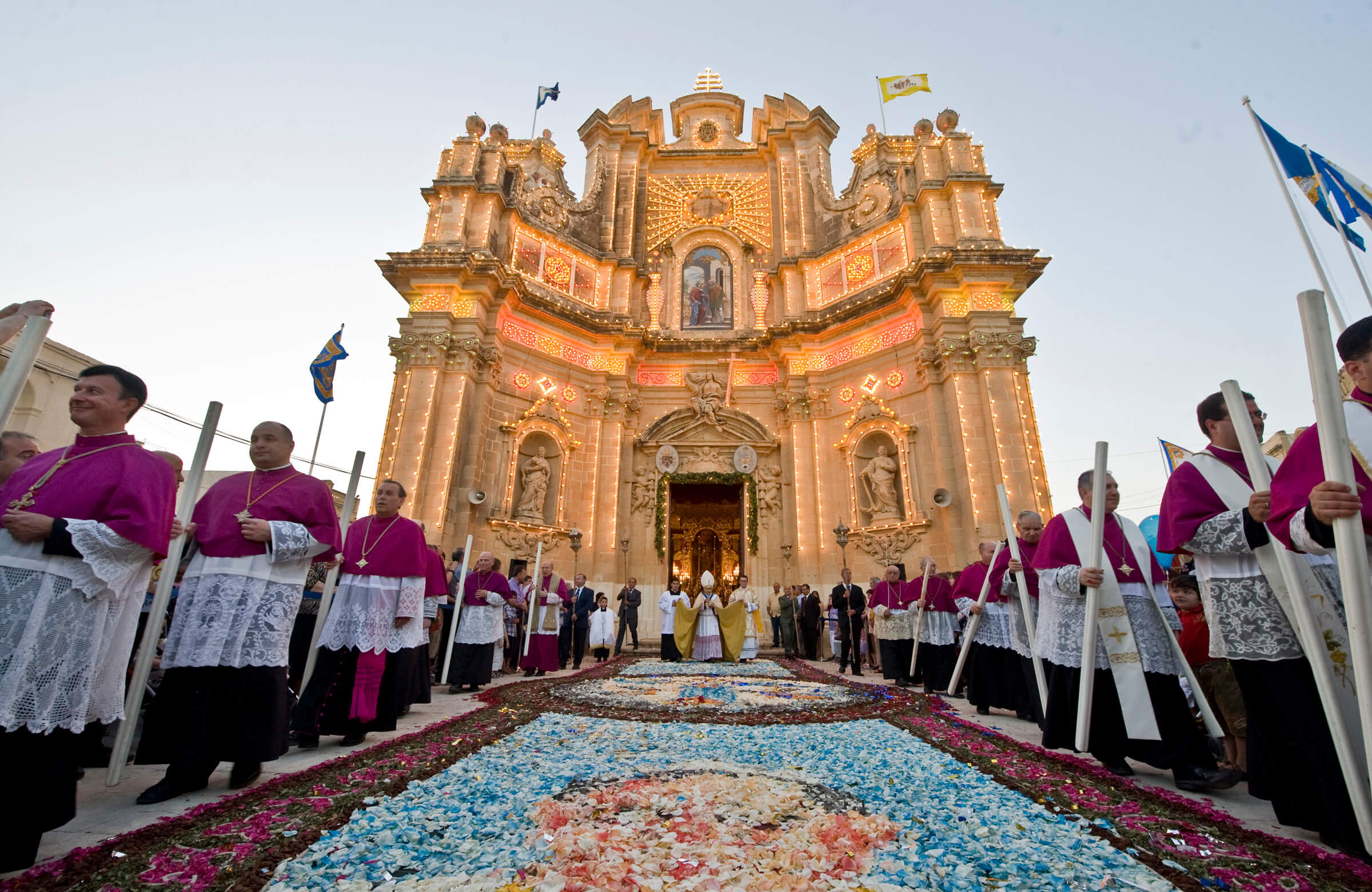Religious culture in Gozo remains strong, and devotional fervour erupts in great feasts, which take place in the summer months. These village festas are unparalleled on the continent, so the English words feast, festival or holy day, do not convey a true meaning of these celebrations.
Every weekend from the last Sunday in May up to mid-September, each town and village organises a festa in honour of the patron saint to whom the parish is dedicated. In these festas, the spiritual and the secular intermingle, and religion and folklore abound.
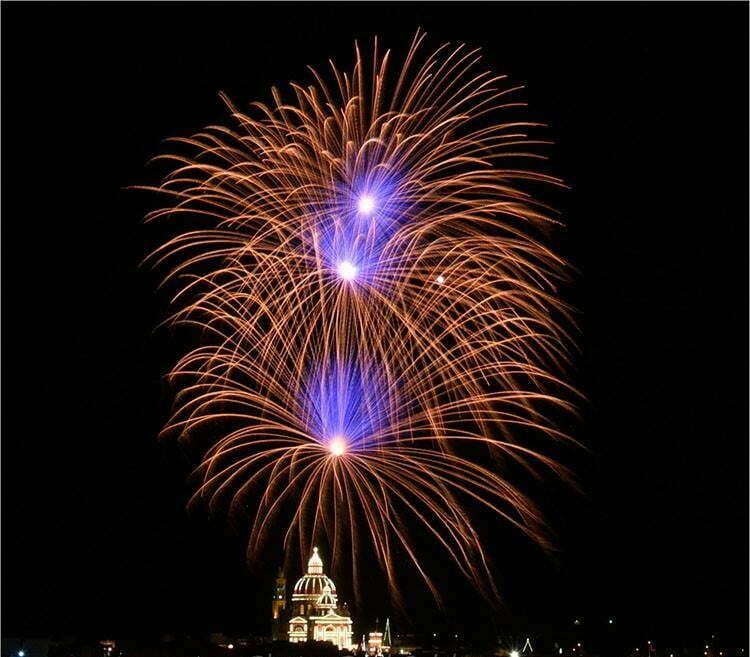
These celebrations have long been an important event and the rivalry between the villages reaches sky-high proportions.
A festa worthy of the name is made up of illuminations, brass bands, fireworks and a procession. The façade of the village church, as well as the principal streets, is decorated with thousands of twinkling lights. From the Wednesday preceding the festa to its eve, several brass bands march through different streets preceded and followed by the young and not so young who revel in dancing and merrymaking. The beginning and end of these marches are marked by a profusion of multi-coloured ground and aerial fireworks. On Sunday afternoon, in the town and larger villages, there is also a traditional horse and donkey race along the main street. The climax of the festa is reached on Sunday evening when a procession with the statue of the saint carried shoulder-high wends its way slowly through the village streets. The villagers, men, women and children, don their best outfits and the houses are appropriately decorated and lit for the occasion.
Festas are colourful celebrations with participants vying for the most splendid show, the best fireworks, and the most spectacular sense of briju (festivity). During the summer holiday months, August in particular, thousands of people from Malta invade Gozo, spilling through the streets, filling the restaurants and bars, and spending the afternoon sleeping off their excesses on the beaches. This is the only time of year when Gozo shakes off its sleepy persona.
A summer trip to Gozo would not be complete without a visit to a village festa. These are held between the last weekend in May and mid-September. Each town/village holds its annual festa dedicated to its patron saint. The church and village are decorated with lights and bunting and the colourful festa statues of saints stand outside the church. Gozitan festas are not only religious in nature, however, and there is plenty of secular fun as well. Bands march through the streets of the villages and fireworks light up the skies as crowds enjoy traditional as well as fast food from the many street stalls. For Gozitans, dressing in their best clothes for the occasion, the three-day festa is the event of the year, with brass bands, horse racing and general merriment reflecting the laid back Gozitan culture.
May
- Il-Munxar – Feast of St. Paul – last weekend in May. This festa kicks off the season with week-long celebrations of the shipwreck of St Paul on Malta in 60 AD.
June
- L-Għasri – Feast of Christ the Saviour – includes horse racing along the streets.
- Għajnsielem – Feast of St. Anthony of Padua.
- Il-Fontana – Feast of the Sacred Heart.
- Ix-Xewkija – Feast of St. John the Baptist – on the Sunday before or after 24 June. Includes not only marches but also concerts by the local Prekursur brass band and horse racing on the streets.
- In-Nadur – Feast of Saints Peter & Paul – on 29 June, which is also a national holiday. Includes an agricultural and crafts show, horse race on the street and concerts by the local Mnarja brass band.
July
- L-Għarb – Feast of the Visit of Our Lady to St. Elizabeth – includes not only marches but concerts by the local Viżitazzjoni brass band.
- Ta’ Kerċem – Feast of Our Lady of Perpetual Succour – includes concerts as well as marches by the local San Girgor (St. Gregory) brass band.
- Ir-Rabat – Feast of St. George – centred on St George’s Basilica just off the main square, this festa includes horse racing along Ir-Rabat’s (Victoria’s)’ main street and concerts by the local La Stella brass band.
- Ta’ Sannat – Feast of St. Margaret the Martyr – includes concerts by the local St. Margerita (St. Margaret’s) brass band and horse racing on the street.
August
- Il-Qala – Feast of St. Joseph – first Sunday of August includes not only marches but also concerts by the local Ite ad Joseph brass band.
- San Lawrenz – Feast of St. Laurence – San Lawrenz is the only village in Gozo to be named after its patron saint. The festa statue of the saint is a fine example made by Gallard et Fils of Marseilles. It arrived in San Lawrenz on 4 August 1895.
- Ir-Rabat – Feast of St. Marija (St. Mary) – 15 August. Includes horse racing along the main street of the capital as well as the Agriculture/Industrial Show at the Villa Rundle and concerts by the Leone brass band.
- Iż-Żebbuġ – Feast of St. Marija – on the first weekend following 15 August. Includes not only marches but also concerts by the local band Sta. Marija (St. Mary’s) Band as well as horse racing on the street.
- Għajnsielem – Feast of Our Lady of Loreto – on the last Sunday of August. Includes not only marches but also concerts by the local San Ġużepp (St. Joseph) brass band.
September
- Ix-Xlendi – Feast of Our Lady of Mt. Carmel – first Sunday in September. Apart from the marches and concerts, the festivities include the Ġostra, a diagonal pole along which competitors attempt to walk to reach the flag at the end and win the competition.
- Ix-Xagħra – Feast of the Nativity of Our Lady – on 8 September, which is also a national holiday known as Jum il-Vittorja (Victory Day). Includes not only marches but also concerts by the local Victory brass band and horse racing along the street.
- Ir-Rabat – Our Lady of Graces – first Sunday after 8 September.
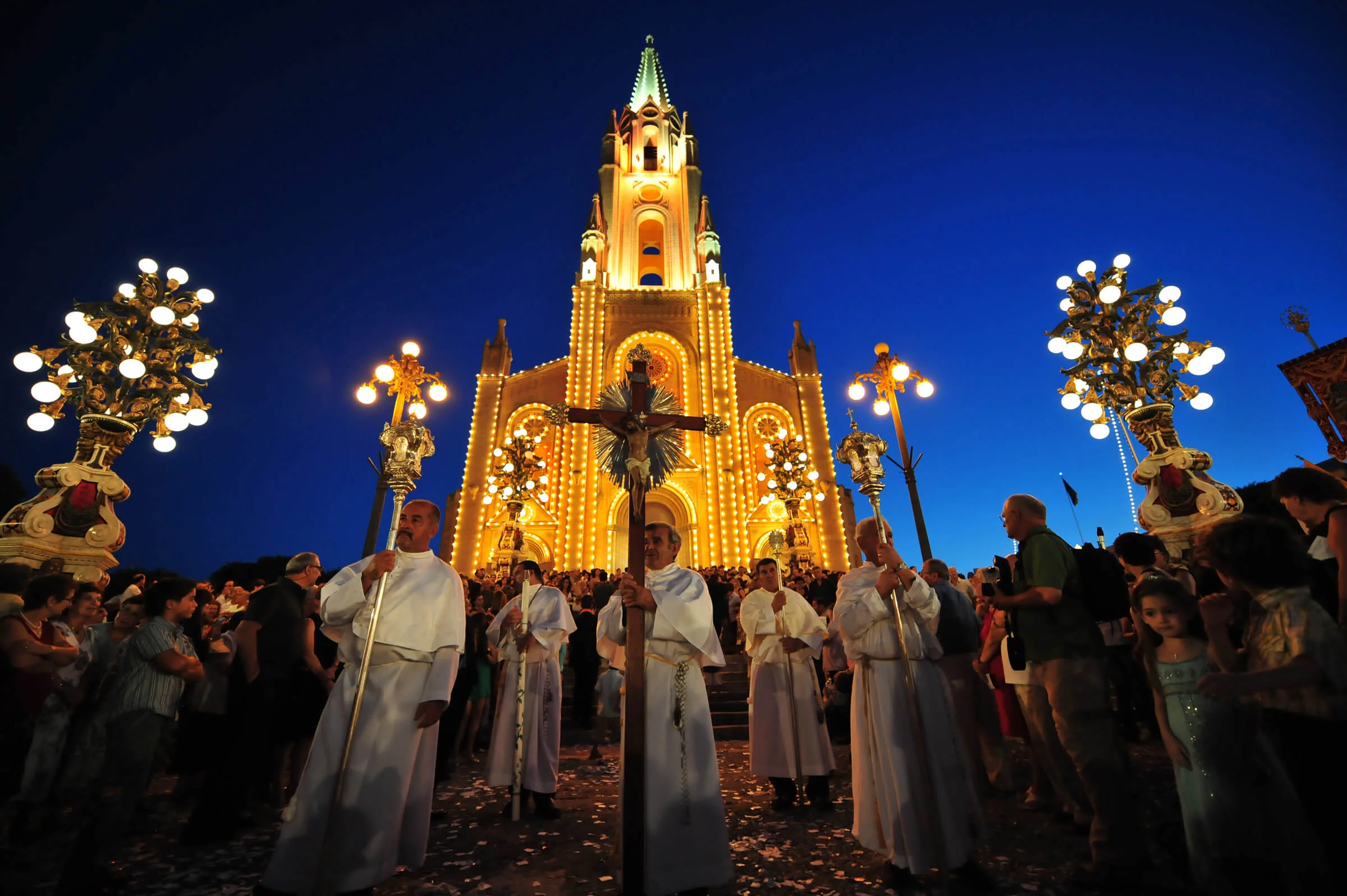
The pilgrims’ Mecca of Ta’ Pinu draws thousands of devotees who seek special favour from the divine elements. People go there to ask for, or rather demand, fortune in their endeavours, which may be anything from a business enterprise, a marriage, a pregnancy, examinations, or a last resort in seeking a cure from serious illness. If things turn out to their satisfaction, they return with a thank-you gift for the Madonna of Ta’ Pinu, in the shape of a votive offering. The gift is never given before the favour is received, but only promised. Glass cases in the church display these offerings; silver hearts, christening robes, artificial limbs, splints, and more. Weddings in Gozo end with the bridal bouquet being placed on the altar of Ta’ Pinu, for a happy marriage. Devotion to Ta’ Pinu is still alive among the thousands of Gozitan emigrants, as can be witnessed from the letters sent by Gozitans living in far off countries.
And what of the tall statue of Jesus Christ, standing on a peak between the capital town and the seaside resort of Marsalforn, like a mini version of Rio de Janeiro’s most famous landmark? The islanders feared that the peak was a dormant volcano, because of its strange shape, and planted the holy statue on it, so that it would not dare erupt. It hasn’t poured out a drop of lava since, but that is because it is no more than an ordinary hill.
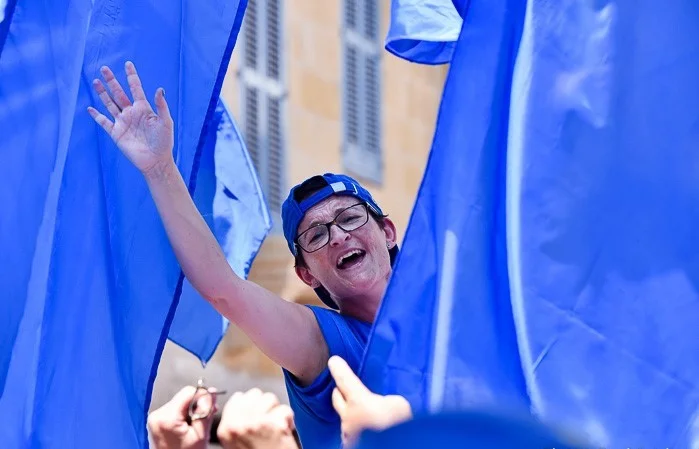
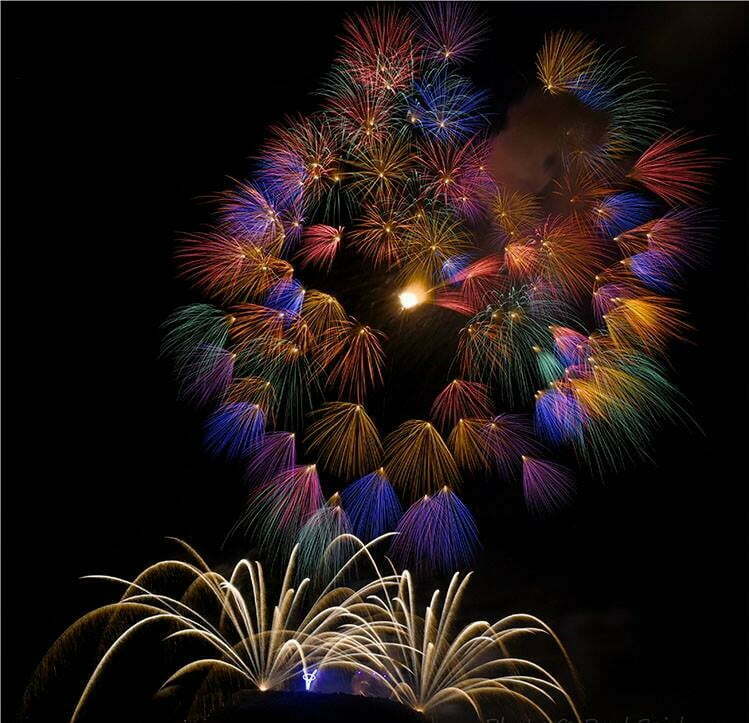
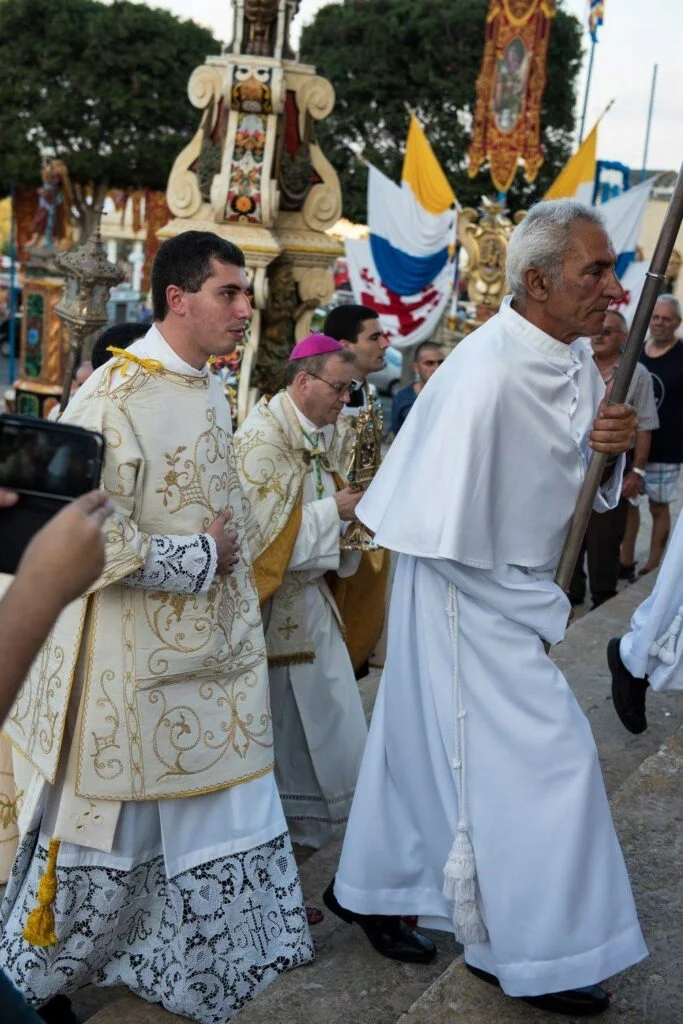
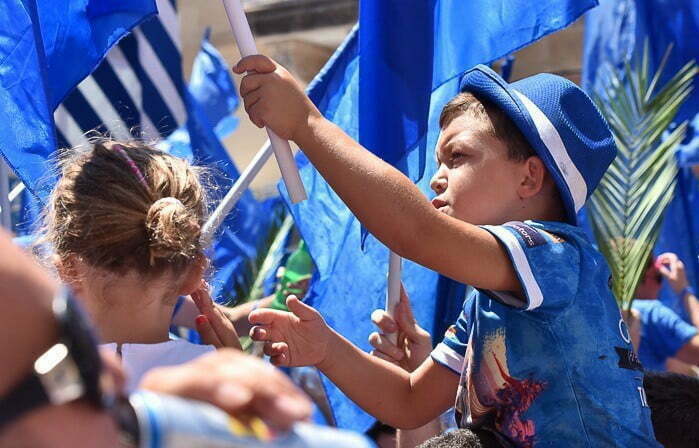
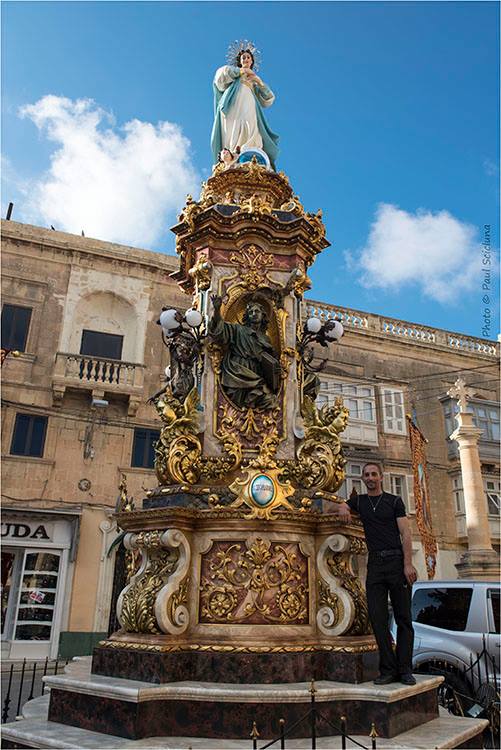
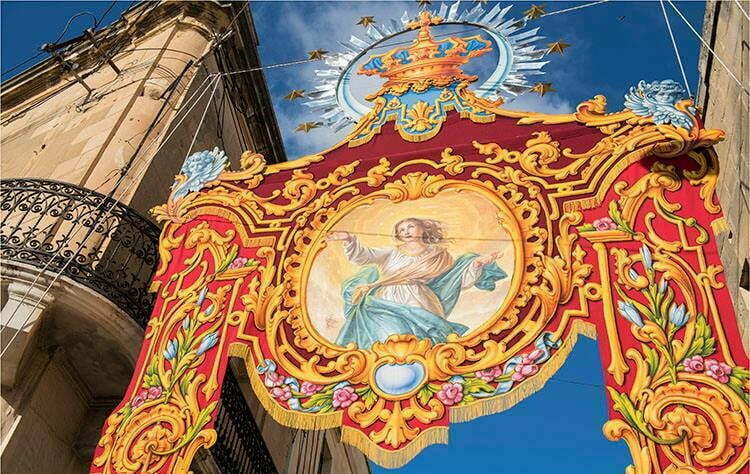
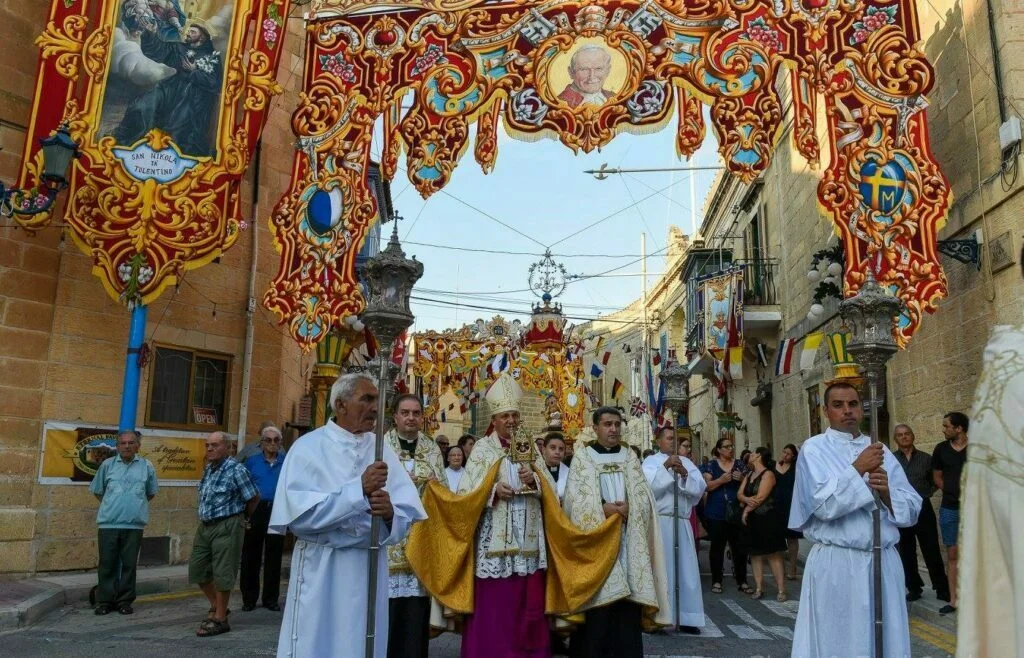
The people of Gozo set much store by their many chapels and churches, in which, during the hearing of the Mass, they sit segregated according to gender: the men on one side, the women on the other. In sheer quantity, these houses of worship could serve a population many times greater. All churches have elaborate gilded interiors, marble works and sacred paintings by prominent artists. Gold and other precious ornaments donated by the parishioners adorn the statue of the patron saint.
Given the historical absence of strong secular leadership in this isolated and insular community, the islanders turned instead to the only figures of authority they recognised: the parish priests. These men, as were their counterparts until fairly recently in traditional Maltese villages, were the arbiters of right and wrong, sorters-out of disputes between friends and neighbours.
Faith in God and the saints helped the people of Gozo through many a crisis, like the plague of 1814, where only 104 died. A church was built as thanksgiving for salvation from this malaise, while a century later a chapel went up in gratitude for the passing of a major cholera epidemic, which affected 2.5% of the Gozitan population.
Religion creeps into myth and legend too, as with the tale of the Lady in White, who floated the stones for a new chapel through the air, depositing them on the very spot where she wanted her shrine to be built. This, it was concluded, was the Madonna, making it quite clear where she wanted her shrine to be built. Then there is also Kerrew, the mystical hermit, who, persecuted by the wanton people of a Maltese village, who sent a loose woman to tempt him, sailed over to Gozo on his cloak. There he lived, until he died, in Pomegranate cove, and people now pray to him for miracle cures.
